
"Reach Out I'll Be There" is a song recorded by the Four Tops from their fourth studio album Reach Out (1967). Written and produced by Motown's main production team, Holland–Dozier–Holland, the song is one of the best known Motown tunes of the 1960s and is today considered the Four Tops' signature song.

"Venus" is a song by Dutch rock band Shocking Blue, initially released as a single in the Netherlands in the summer of 1969. Written by Robbie van Leeuwen, the song topped the charts in nine countries. In 1981, it was used to open the "Stars on 45" medley.

"Juke Joint Jezebel" is a song by industrial rock group KMFDM from their 1995 album Nihil. It is KMFDM's most widely known song to date, with around three million copies of the song sold across various releases.
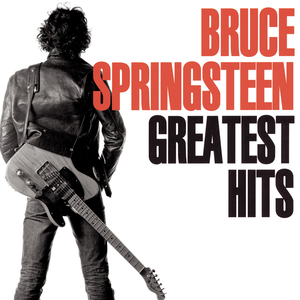
Greatest Hits is the first compilation album by American singer-songwriter Bruce Springsteen, released February 27, 1995, on Columbia Records. It is a collection of some of Springsteen's hit singles and popular album tracks through the years along with four new songs at the end, mostly recorded with the E Street Band in 1995. The latter constituted Springsteen's first release with his backing band since the late 1980s. Some of the songs are shorter versions of the original album releases.

"Exhale " is a song by American recording artist Whitney Houston, featured on the soundtrack for the film Waiting to Exhale. It was released as the lead single from the soundtrack on November 7, 1995, by Arista Records. The song was written and produced by Babyface. A mid-tempo R&B and soul ballad, composed in the key of D-flat major, the song's lyrics speak about growing up and learning to let go. The song garnered mostly positive reviews from critics, many of whom noted Houston's vocal maturity in the song.
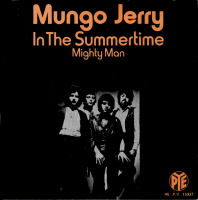
"In the Summertime" is the debut single by British rock band Mungo Jerry. Written and composed by its lead singer, Ray Dorset, it celebrates the carefree days of summer. In 1970, it reached number one in charts around the world, including seven weeks on the UK Singles Chart, two weeks on one of the Canadian charts, and number three on the Billboard Hot 100 singles chart in the US. It became one of the best-selling singles of all-time, eventually selling 30 million copies.

"Run to You" is a song performed by American singer Whitney Houston and is the fourth single released from The Bodyguard: Original Soundtrack Album. The song was released on June 21, 1993 by Arista Records. It was written by Jud Friedman and Allan Rich, and produced by David Foster. Originally intended to be a break-up song, it was approved by the production and stars. However, a month later, the director of The Bodyguard called, saying he liked the song so much, but he'd rather have it to be a love song so the entire song was rewritten, except for the title.
The Madly in Anger with the World Tour was a concert tour by American heavy metal band Metallica. It supported the band's eighth studio album, St. Anger. The tour lasted over 12 months, beginning in the fall of 2003, performing over 100 shows.
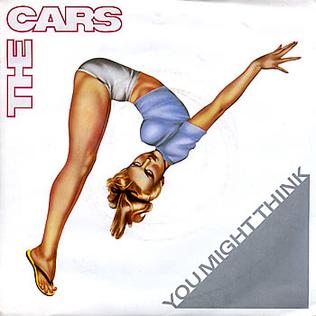
"You Might Think" is a song by American rock band the Cars from their fifth studio album, Heartbeat City (1984). The track was written by Ric Ocasek and produced by Mutt Lange and the Cars, with Ocasek also providing the lead vocals.
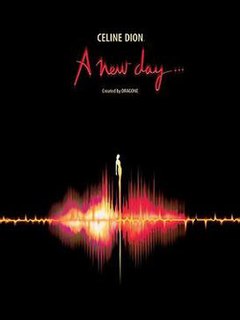
A New Day... was the first concert residency performed by Canadian singer Celine Dion in The Colosseum at Caesars Palace in Las Vegas. It was created and directed by Franco Dragone and premiered on 25 March 2003. A 90-minute event, A New Day... introduced a new form of theatrical entertainment, a fusion of song, performance art, innovative stage craft and state-of-the-art technology. Dion was originally contracted for three years, however, due to its immediate success, the show continued for an additional two years. A New Day... ended on 15 December 2007, after a five-year run. A New Day ... is the most successful residency of all time, grossing over US$385 million and drawing nearly three million people to 717 shows.

The Game Tour was the seventh world concert tour by the British rock band Queen to support their successful 1980 album The Game. This tour featured the first performances in South America by the group. This tour marked the last time Queen played without a fifth player, as all tours from 1982 onwards would feature an extra man playing on keyboard.
The Rumours tour was a concert tour by Fleetwood Mac, after the release of the band's eleventh album with the same title in February 1977. Due to the album's success Fleetwood Mac embarked on a world tour taking in North America, Europe, their native UK, Japan and Oceania.
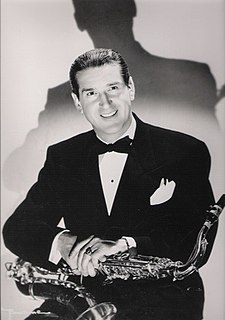
Freddy Nagel was an American bandleader. His band frequented dance halls throughout the United States during the big band era and reached a wide audience on national CBS and Mutual Radio big band remotes throughout the 1940s.
Little Walter (1930–1968) was an American blues artist who is generally regarded as the most influential blues harmonica player of his era. Most of his earliest recordings were as a sideman, when he contributed harmonica to songs by Chicago blues musicians such as Jimmy Rogers and Muddy Waters. As the featured artist, he recorded the instrumental "Juke" in 1952. The single reached number one on the Billboard Rhythm and Blues chart and launched his career as a solo artist.














